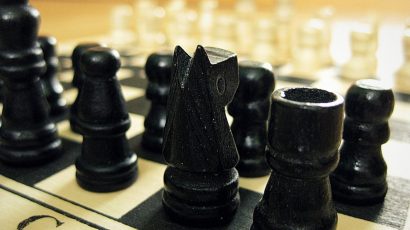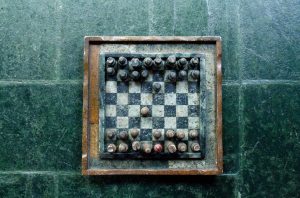The Story Behind The Game Of Chess

I previously wrote an article on buying Chess sets and thought I would expand on the history of chess.
 Chess has experienced a lengthy trek bringing it. It has experienced a variety of forms from a number of different states, each getting a distinctive spin on the game. In the late 15th Century, where many of the most popular rules of the day became created, Chess is derived most heavily in its modern incarnation. Since this time, Chess has formed a hold on many of the sensible heads of every Century, never evaporating from the common view. Many novels have already been composed on Chess from a variety of locations and authors, placing it high in the limelight of intelligent, popular games which could both stimulate and entertain.
Chess has experienced a lengthy trek bringing it. It has experienced a variety of forms from a number of different states, each getting a distinctive spin on the game. In the late 15th Century, where many of the most popular rules of the day became created, Chess is derived most heavily in its modern incarnation. Since this time, Chess has formed a hold on many of the sensible heads of every Century, never evaporating from the common view. Many novels have already been composed on Chess from a variety of locations and authors, placing it high in the limelight of intelligent, popular games which could both stimulate and entertain.
The primary game that Chess came to be born was originated in the 6th Century in India. These divisions, elephants, chariots, infantry, and calvary, were represented by pieces much like Rooks, Bishops, Pawns, and Knights respectively. This game was played on an eight by eight board, which while uncheckered, had particular spaces with special marks. Now the meanings of the marks are not currently known, but do not seem to have special meaning to the game itself. This game, the earliest that is located, appears to be the birthplace of Chess.
To the Far East, the game was carried by travellers from Chaturanga. Here, the game started to be played on the intersecting lines rather than the blank spaces. The purpose of the game was to render the opponent’s King, occasionally called a General entirely worthless, much in line with a contemporary Checkmate. This game shares many components with another popular game, Go, which also comes from Eastern Asia. The pieces for this variant of Chess are commonly level, marked pieces, much like a conventional checkers set.
Through the enlarging Arabic empire, and Persia, the Byzantine Empire, however, the match slowly started to reach Europe. The Norman Conquest of England reached even though the game was unpopular with Northern Europeans only at that point, regions which played Chess early on. It was not until Chess pieces began to be depicted as they are today- Kings, Queens, Bishops, Knights, Rooks, and Pawns, or men of arms- in the middle of the 12th Century that Chess started to grow popular with the folks.
In 1475 AD, however, radical changes were made to the game, evolving it to the game that Chess is today. The Queen was granted powers that had never been seen on a Chessboard before. Bishops were given more power as well, enabling the game to start to focus more on long-ranging attacks which ultimately accelerated up the game. It is also thought that the transition of the pieces into more courtly images, rather than military ones, helped the game to catch hold in Europe. In the centre of the 19th Century, Chess began to take an even more powerful hold, becoming a favorite game played among intellectuals.
